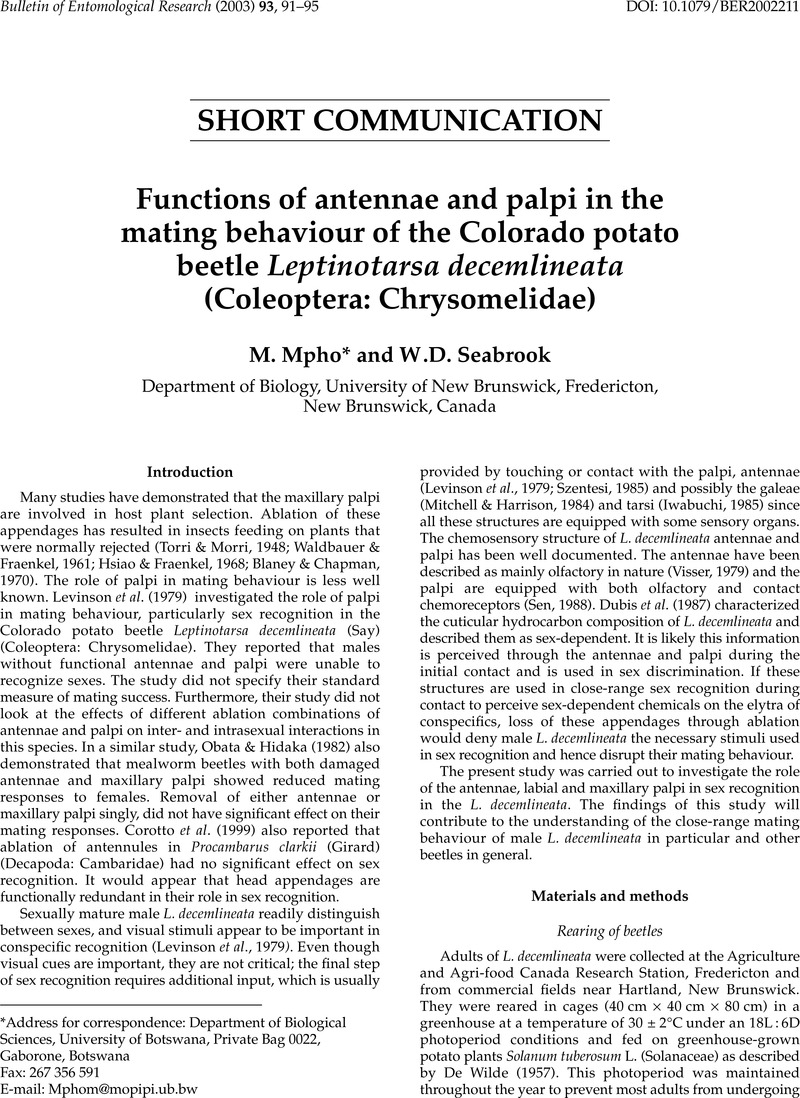Crossref Citations
This article has been cited by the following publications. This list is generated based on data provided by Crossref.
Voigt, D.
Peisker, H.
and
Gorb, S.
2009.
Applied Scanning Probe Methods XIII.
p.
1.
KAWAZU, Kei
ICHIKI, Ryoko T.
DANG, Dung T.
and
NAKAMURA, Satoshi
2011.
Mating Sequence and Evidence for the Existence of a Female Contact Sex Pheromone in Brontispa longissima (Coleoptera: Chrysomelidae).
Japan Agricultural Research Quarterly: JARQ,
Vol. 45,
Issue. 1,
p.
99.
Omkar
Sahu, Jyotsna
and
Kumar, Gyanendra
2013.
Age specific mating incidence and reproductive behavior of the ladybird beetle, Anegleis cardoni (Weise) (Coleoptera: Coccinellidae).
Journal of Asia-Pacific Entomology,
Vol. 16,
Issue. 3,
p.
263.
Chiba, Yuki
Yosano, Shun
and
Hori, Masatoshi
2023.
Chemosensory input from mouthparts in response to sexually dimorphic cuticular wax mediates male sexual discrimination in Galerucella grisescens (Coleoptera: Chrysomelidae).
Scientific Reports,
Vol. 13,
Issue. 1,
Xie, Yifei
Tan, Yifan
Wen, Xuanye
Deng, Wan
Yu, Jinxiu
Li, Mi
Meng, Fanhui
Wang, Xiudan
and
Zhu, Daohong
2024.
The Expression and Function of Notch Involved in Ovarian Development and Fecundity in Basilepta melanopus.
Insects,
Vol. 15,
Issue. 4,
p.
292.
Cirino, Lauren A.
Lindemann, Kirsten J.
Hagey, Travis J.
and
Rodríguez, Rafael L.
2025.
Functional Allometry of Sexually Selected Traits in Tetraopes tetrophthalmus Red Milkweed Beetles (Coleoptera: Cerambycidae).
Journal of Morphology,
Vol. 286,
Issue. 8,


